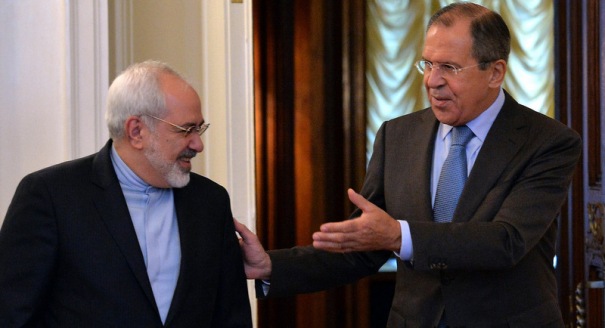On November 11, Russia and Iran signed a package of documents paving the way for Moscow to construct up to eight nuclear power units in the Islamic republic. The first two reactors are expected to be built at the Bushehr Power Plant alongside the power generating block constructed by Russian engineers and transferred to the Iranians in 2013. The media was quick to call this deal a “turning point” in the relations of the two countries and, to a large extent, it was correct in its assessment.
With this agreement, Russia and Iran have established a solid economic foundation for political dialogue and acquired a tangible symbol of cooperation that they had been lacking since the completion of the first nuclear reactor at Bushehr. This deal brings substance to the comprehensive August 5 Memorandum of Understanding on the principles of the trade and economic relations between the two countries. It also reassures Tehran of Russia’s long-term economic interests in the country. This, in turn, gives the authorities of the Islamic republic a hope that to secure its economic gains from the cooperation with them Moscow may become the protector of Iranian interests in Tehran’s confrontation with the West. The agreement has thus been billed as a serious political and diplomatic success in Tehran.
Moscow also stands to benefit—namely financially—from nuclear cooperation with Iran. As opposed to other Russian partners, Tehran has agreed to pay for the power plant construction from its own pocket and in hard currency. By contrast, in Vietnam, Turkey, and Belarus, Moscow was compelled to provide the authorities with loans to finance the construction of nuclear projects built by Russian specialists.Russian participation in the construction of the new power generating blocks will also increase the volume of Russian-Iranian trade which has been falling by more than 30 percent annually since 2011.
The importance of this deal is magnified by the November 24 deadline for concluding negotiations with the P5+1 group. The deal is a serious signal that irrespective of the outcomes of the talks, Iran will continue its cooperation with the Russia. The agreement granted Rosatom, the Russian state atomic energy corporation,a monopoly over the implementation of future nuclear projects in Iran. Even if the existing sanctions that prevent Russian rivals from entering this sector of the Iranian economy are lifted, it will be difficult for Rosatom competitors to find their niche in this market. For the Iranian public this agreement is also an important message that sanctions cannot hamper the government’splans to further development its nuclear industry. As a result, in addressing the population of the country,the Islamic republic authorities may feel more comfortable downplaying the vital importance of the P5+1 talks—especially if negotiations fail to reach an agreement.
Moreover, Russian participation in the construction of the power units can boost the development of Iranian nuclear technology and the corresponding infrastructure. The treaty signed between Moscow and Tehran implies that Rosatom is expected to rely on Iranian economic capacity and to use local subcontractors whenever possible during the construction of the new reactors. Russia is also supposed to train Iranian cadres for the nuclear industry. The sides agreed that in the future, they may even consider deploying elements of the nuclear fuel cycle in the Islamic republic. These provisions of the agreement perfectly suit the Iranian authorities’ goal of turning the Islamic republic into the largest regional energy producer.
Yet, there are a number of challenges that can put a damper on the future of the Russian-Iranian nuclear cooperation. First of all, in order to be commercially viable, the construction of the new power generating units should take less than four to five years. Otherwise, the costs of the project will outrun the profits. The failure to build the new reactors in Iran within the original timeframe may also have negative implications for Rosatom’s international reputation. Delays could be used by Rosatom’s foreign rivals to dissuade other countries in the region from working with the Russians in implementing their nuclear projects. Under these circumstances, the success of this Russian-Iranian nuclear venture is highly dependent on the future of the sanctions regime. The West’s existing punitive measures may disrupt the supply of the equipment necessary for the implementation of the project (Rosatom purchases some of its parts from abroad). Sanctions can also obstruct financial transactions and prevent the Iranian authorities from paying Russian contractors for their work.
Unfortunately for Iran, the profitability of the venture does not guarantee Moscow’s political loyalty.Tweet This
Unfortunately for Iran, the profitability of the venture does not guarantee Moscow’s political loyalty or its willingness to stick with previously reached agreements. There is no way to insulate the new project from twists in the political dialogue between Moscow and Tehran. It could not have been mere coincidence that some of delays in the construction of first Bushehr power generating unit coincided with dips in Russian-Iranian relations. As demonstrated by the experience of the S-300 complex deal and the Gore-Chernomyrdin agreement of 1995, the opportunity to normalize relations with the European Union and United States may be a serious incentive for Russia to reconsider some of its approaches toward the Islamic republic. Currently, the possibility of such a U-turn in Moscow’s foreign policy is minimal, but anything can change with the passage of time.
All in all, the Russian-Iranian nuclear deal may have been a definite diplomatic success for both countries but far from being the end of the story, this is only the beginning.
Nikolay Kozhanov is a senior lecturer in political economy of the Middle East at the St.-Petersburg State University and an expert of the Institute of the Middle East (Moscow).
